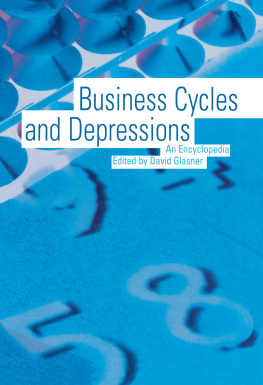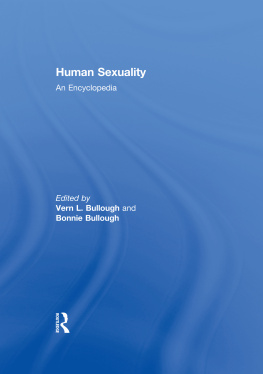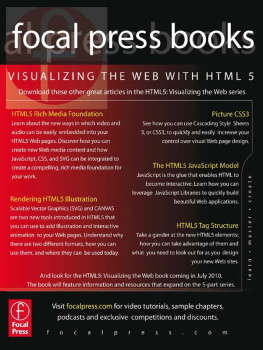David Glasner - Business Cycles and Depressions: An Encyclopedia
Here you can read online David Glasner - Business Cycles and Depressions: An Encyclopedia full text of the book (entire story) in english for free. Download pdf and epub, get meaning, cover and reviews about this ebook. year: 1997, publisher: Routledge, genre: Politics. Description of the work, (preface) as well as reviews are available. Best literature library LitArk.com created for fans of good reading and offers a wide selection of genres:
Romance novel
Science fiction
Adventure
Detective
Science
History
Home and family
Prose
Art
Politics
Computer
Non-fiction
Religion
Business
Children
Humor
Choose a favorite category and find really read worthwhile books. Enjoy immersion in the world of imagination, feel the emotions of the characters or learn something new for yourself, make an fascinating discovery.
- Book:Business Cycles and Depressions: An Encyclopedia
- Author:
- Publisher:Routledge
- Genre:
- Year:1997
- Rating:4 / 5
- Favourites:Add to favourites
- Your mark:
- 80
- 1
- 2
- 3
- 4
- 5
Business Cycles and Depressions: An Encyclopedia: summary, description and annotation
We offer to read an annotation, description, summary or preface (depends on what the author of the book "Business Cycles and Depressions: An Encyclopedia" wrote himself). If you haven't found the necessary information about the book — write in the comments, we will try to find it.
Business Cycles and Depressions: An Encyclopedia — read online for free the complete book (whole text) full work
Below is the text of the book, divided by pages. System saving the place of the last page read, allows you to conveniently read the book "Business Cycles and Depressions: An Encyclopedia" online for free, without having to search again every time where you left off. Put a bookmark, and you can go to the page where you finished reading at any time.
Font size:
Interval:
Bookmark:

Business Cycles and Depressions
GARLAND REFERENCE LIBRARY OF SOCIAL SCIENCE (VOL. 505)
Business Cycles and Depressions
An Encyclopedia
Editor
David Glasner
Federal Trade Commission
Consulting Editors
Thomas F. Cooley
University of Rochester
Barry Eichengreen
University of California at Berkeley
Harald Hagemann
University of Hohenheim
Philip A. Klein
Pennsylvania State University
Roger Kormendi
University of Michigan
David Laidler
University of Western Ontario
Phillip Mirowski
University of Notre Dame
Edward Nell
New School for Social Research
Lionello F. Punzo
University of Siena
Anna J. Schwartz
National Bureau of Economic Research
Alesandro Vercelli
University of Siena
Victor Zarnowitz
Center for International Business-Cycle
Research, Columbia University

First published 1997 by Garland Publishing, Inc.
Published 2013 by Routledge
2 Park Square, Milton Park, Abingdon, Oxon OX14 4RN
711 Third Avenue, New York, NY, 10017, USA
Routledge is an imprint of the Taylor & Francis Group, an informa business
Copyright 1997 David Glasner
All rights reserved
Library of Congress Cataloging-in-Publication Data
Business cycles and depressions : an encyclopedia / editor, David Glasner; consulting editors, Thomas F. Cooley [et al.].
p. cm. (Garland reference library of social science; vol. 505)
Includes bibliographical references and index.
1. Business cyclesEncyclopedias. 2. DepressionsEncyclopedias. I. Glasner, David. II. Cooley, Thomas F. III. Series: Garland reference library of social science; v. 505.
HB3711.B936 1997
338.54203dc20 | 96-18457 |
CIP |
ISBN 13: 978-0-824-00944-1 (hbk)
Cover art supplied by Tony Stone. Photographer, Lonnie Duka.
Cover design: Lawrence Wolfson Design, New York.
Contents
This volume has been designed to aid students, scholars, and laymen interested in learning about a range of topics related to business cycles and depressions. It includes articles on theories of business cycles, recessions, depressions, financial panics, and crises as well as on the theoretical concepts related to those phenomena, on statistical techniques used to study them, and on specific historical events or episodes such as the Great Depression or the crisis of 1873. It also contains biographical articles on important contributors to the study of business cycles and related phenomena.
The study of business cycles and financial panics and crises is not a field of study clearly demarcated from others in economics. Historically, the development of business-cycle theory or, more generally, of theories of aggregate economic fluctuations, was closely related to the development of monetary theory. More recently, the study of business cycles was largely eclipsed by the development of macroeconomics during the Keynesian Revolution and its aftermath. Whereas business-cycle theories involved, at least implicitly, some sort of dynamic model, early macroeconomic models and many formal monetary models were models of static equilibrium. Although it was possible to introduce dynamic elements into macroeconomic models, much of macroeconomic theory was formulated in a static or a comparative-statics framework. Given the lack of any precise boundaries between the domain of business-cycle analysis and those of monetary analysis and macroeconomic analysis and the overlap between analytical and statistical tools used in business-cycle research and in other branches of economics, the choice of topics to include or exclude may appear arbitrary in certain instances. In any event, when discussing topics that may not be generically related to business-cycle research, contributors have endeavored to draw out the relationships between those topics and the concerns of those engaged in business-cycle research, broadly understood.
Although static macroeconomic or static monetary models are not necessarily uninteresting from the perspective of business-cycle theory, this volume is generally not concerned with such models. Similarly, the choice of theoreticians or researchers to be included in this volume has been dictated largely by whether the individual made substantial contributions to the study of cyclical or dynamic phenomena as opposed to static theory. These decisions often depended on subjective assessments of the importance and relevance of a given individuals contributions to the general study of business cycles and economic fluctuations. But obviously the absence of entries in this volume on such figures as Lon Walras, Carl Menger, P. H. Wicksteed, and James Meade reflects no judgment about their contributions to economics in general. A second, more formal, criterion for the choice of researchers about whom to write articles was that they not be born after 1920.
A few words about the citation practices adopted in this volume may be in order. To make the articles more accessible, I have tried to discourage excessive citations to the literature. Thus, many assertions for which a citation might be provided in a journal article have been left without citation in the articles in this volume. However, sources for any significant quotations, important facts, or controversial propositions are provided. This is usually done, in accord with current practice, by citing the author and the year of publication of the work cited. When the work cited is otherwise unrelated to the topic of the article, the full source of the quotation may be given in the text rather than in the bibliography.
I have tried to make the citations as uniform as possible throughout the volume, so that where multiple editions of a particular work appear, the same edition is cited across all articles, e.g., the fourth edition of Haberlers Prosperity and Depression (1962) is generally cited whenever that work is referred to. When reprints, modern editions, or translations are cited, the date of original publication (in brackets) and the date of the particular edition cited are included within the parentheses following the authors name, e.g., Smiths Wealth of Nations is cited as Smith ([1776] 1976) and Wicksells Interest and Prices is cited as Wicksell ([1898] 1936). I have also tried, where possible, to provide references to more recent republications of older journal articles that often may no longer be easily accessible. For example, the reference to Samuelsons famous 1939 article on multiplier-accelerator interaction is to volume 2 of his Collected Scientific Writings rather than to the Review of Economic Statistics and is cited as Samuelson ([1939] 1966).
Finally, I have asked contributors to include in their bibliographies not only works actually cited within their articles but also other works that a reader interested in doing further research on the topic would want to consult. The bibliographies make no distinction between works referred to in the text and works included simply for their interest to one wishing to do further research on the topic. But the distinction will be clear to any careful reader.
I was assisted from the very outset by a group of contributing editors who provided wise advice and counsel to me, particularly in the early process of selecting topics to be included and in finding authors to contribute articles. The process has been long and arduous, and without the generous assistance of my editors at crucial stages, the project would never have been completed. I particularly would like to thank Anna Schwartz, David Laidler, Tom Cooley, Phil Mirowski, Edward Nell, and Victor Zarnowitz for allowing me to make inordinate demands on their time during the long process of planning and editing this volume. Finally, my deepest thanks go to Tovi, Chaya, and Shifra without whose love and patience this project would not have been possible.
Next pageFont size:
Interval:
Bookmark:
Similar books «Business Cycles and Depressions: An Encyclopedia»
Look at similar books to Business Cycles and Depressions: An Encyclopedia. We have selected literature similar in name and meaning in the hope of providing readers with more options to find new, interesting, not yet read works.
Discussion, reviews of the book Business Cycles and Depressions: An Encyclopedia and just readers' own opinions. Leave your comments, write what you think about the work, its meaning or the main characters. Specify what exactly you liked and what you didn't like, and why you think so.








